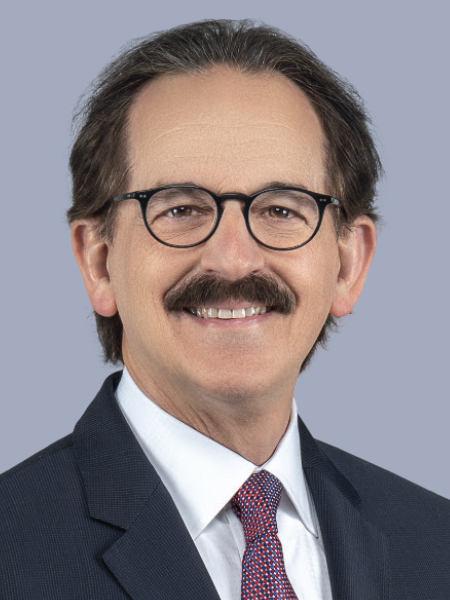Interview with David Hochberg, DDS
Check out this Q&A with Dr. David Hochberg, new president of the AAID, for his insights on:
- How practitioners should select their first implant cases
- The impact intraoral scanning technology can have on a practice
- Implant dentistry’s present and future
Dr. David Hochberg is a general dentist based in Atlanta. A well-known leader in the field of implant dentistry, he is also the new president of the American Academy of Implant Dentistry (AAID). In this interview, which took place prior to the AAID annual conference that was held in October, Dr. Hochberg discusses the importance of case selection when first placing implants, the advantages of intraoral scanning technology, his decades-long involvement with the AAID, and what he foresees in implant therapy’s future.
DR. NEIL PARK: David, as I remember, when you first graduated from dental school, your first associateship was a different arrangement from what most people experience. Can you tell us a little bit about that?
DR. DAVID HOCHBERG: It really was. I came out of school and got my first position in a group practice. Group practice settings in the early ’80s weren’t seen all that often. The leaders of this group were a family of periodontists — Drs. Marvin Sugarman, Edward Sugarman and Richard Sugarman.
NP: Well-known people, right? I remember surgical instruments called “Sugarman files.”
DH: That’s correct. They were well-known, and Dr. Marvin Sugarman was one of the developers of periodontal surgical protocols in the ’40s and ’50s, so I was very fortunate to be a general dentist in that practice. There, I was introduced to techniques related to implants that Dr. Edward Sugarman was providing. I think he was probably one of the first periodontists who understood the benefits of restoring oral health with dental implants. The story goes like this: I was in Operatory A, he was in Operatory B, and I heard this noise coming from Operatory B that sounded to me like a hammer and a nail. I got up and I looked at Operatory B, and there was Ed with a surgical mallet, and he was placing a blade implant, which had to be hammered in — and that was the sound that I heard. So for me, my implant moment was a sound, and I never looked back. He was my first mentor, and he was very gracious about sharing the early principles of implant placement with me. That was followed by a trip to Fort Lauderdale, Florida, where I saw Drs. Carl Misch and Leonard Linkow for a subperiosteal forum. I think Dr. Bob James was also there, from Loma Linda University. We took that course, and my first implant was a subperiosteal when we came back to Atlanta.
NP: Wow. So this was before the Brånemark System® (Nobel Biocare; Yorba Linda, Calif.)?
DH: Historically, this was two years before that. The Brånemark System and the criteria for successful osseointegration, in my mind, came out around ’85, so this was ’83–’84. Back then, implants were available for single-tooth replacement, but they were used more prominently for restoring edentulous arches. The subperiosteal was the implant of choice back then. I’m very fortunate that some of these patients have stayed with my practice for the past 30 years, and they still have those restorations. We really helped those patients by improving their oral health and quality of life.
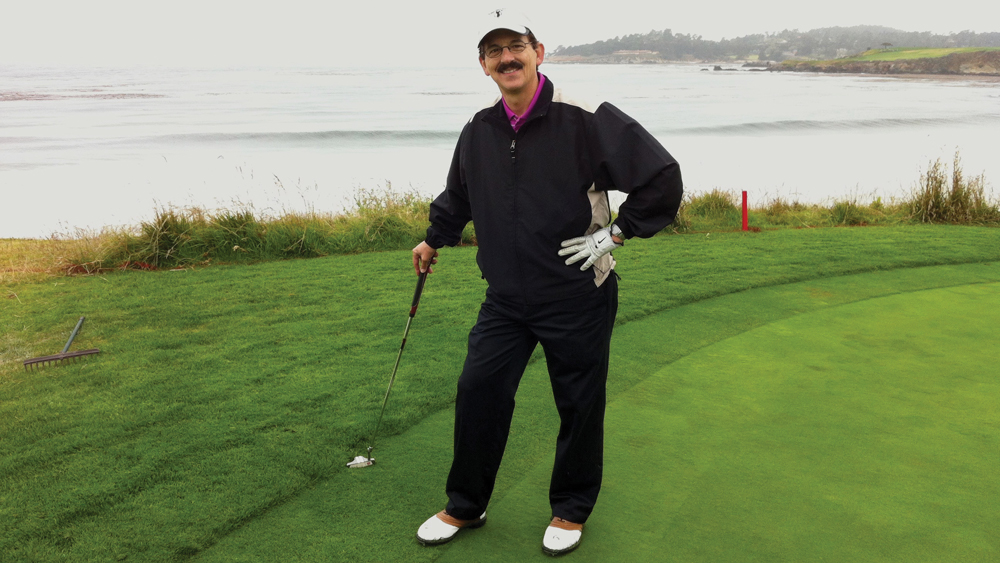
Golf is one of many hobbies that Dr. David Hochberg enjoys when not treating patients or spearheading educational efforts in the field of implant dentistry.
NP: Things have really, really changed. In those days, before the Brånemark System, people who were doing implants were very much on the edge.
DH: Absolutely. And then people like Drs. Jack Hahn and Duke Heller came to Atlanta, and I remember distinctly attending my first hands-on course for what they called “root-form” implants back then. I took my first courses from Dr. Hahn and have used his implant designs throughout the years. He was and is an innovator. He simplified everything, and he always helped build confidence in a wonderful manner that let you feel that if he could do it, you could do it, and that was his gift. I understand that he’s still very much involved with Glidewell Dental today.
I took my first courses from Dr. Hahn and have used his implant designs throughout the years. He was and is an innovator.
NP: Absolutely. Dr. Hahn is the designer of the Hahn™ Tapered Implant System (Glidewell Direct; Irvine, Calif.).
DH: Appropriately named.
NP: Exactly. And as you say, David, he is committed to having general practitioners place implants in a safe and predictable way, and to making it a valuable and important part of practices. It’s just as it was in the beginning of your career — it’s the same way, the same strategy.
DH: It’s wonderful to see him and all that he has done. So these were some of the early pioneers in implant dentistry and, coincidentally or not coincidentally, they were all associated with the academy that I’m very proud of. The American Academy of Implant Dentistry, from a historical standpoint, is one of the oldest academies in the world that’s dedicated to restoring and rehabilitating oral health in patients with dental implants, and they have been doing it for some 66 years. I have found that there’s been a common denominator for the AAID: It’s always been about the patient. When you look back to Drs. Aaron Gershkoff and Norman Goldberg, who were responsible for creating and placing the first subperiosteal implant in 1948, it was about the patient. Following them came Dr. Leonard Linkow, and again, he took the concepts and protocols and shared them with the world, and it was still about the patient. Then Dr. Hilt Tatum created the sinus lift, and again, it was about the patient. And then Dr. Carl Misch condensed everything to develop procedures and protocols that were very predictable in almost anybody’s hands. All of these people were AAID presidents, so I’m very honored to follow in that strong tradition.
NP: Congratulations, and it’s a great honor for you to lead that organization. So you’ll be taking the reins of the AAID soon?
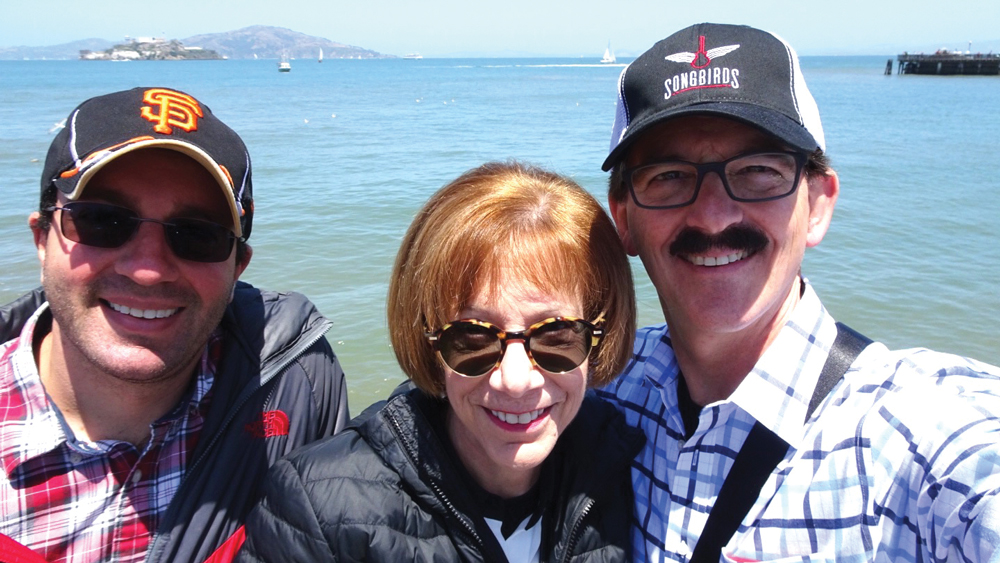
Dr. Hochberg enjoying some time with his wife and son on the West Coast.
DH: I will take the reins of this wonderful organization that really has provided me with all of my implant education since I started this wonderful journey back in the early ’80s. There was an educational opportunity that was presented to me called the MaxiCourse®. The MaxiCourse is a creation of the AAID, and when I was in the first MaxiCourse, it was in Augusta, Georgia, at what was then known as the Medical College of Georgia School of Dentistry. A dentist named Dr. Terry Reynolds was the creator of this continuing education model. I remember driving from Atlanta to Augusta every weekend for nine months to take his courses, and he would have speakers from throughout the country come in. That’s where my initial education began. The whole MaxiCourse program has grown. There are 19 of them now, and it’s international. It’s a great place for people to get started in the profession. If you’re interested in being educated, there are formal programs that are tried-and-true, and the MaxiCourse is one of them. I think the AAID has educated upward of 5,000 people. Many of them have gone on to become credentialed in our organization and have become active in the profession in an attempt to better serve their patients.
I think the AAID has educated upward of 5,000 people. Many of them have gone on to become credentialed in our organization and have become active in the profession in an attempt to better serve their patients.
NP: That’s some good information about how to get the education needed to add implant dentistry to your practice. What kinds of mistakes have you seen doctors make when they add implant dentistry to their practice?
DH: You know, personally, when I look back at my career, I realize that I never wanted to be out on that edge — I wanted to be within the envelope. I learned very early on that when somebody with experience and expertise shares with you their protocols and procedures, you follow them to the letter. Case selection is critical when you’re first starting out. You don’t want to do an immediately placed implant for your first case. I think first cases should be selected not only from an anatomical consideration, but also based on the patients. We have lovely patients, and we have not-so-lovely patients. I think you want to select a lovely patient for your first protocol, and hopefully everyone understands what I mean by that. The other thing is, the case that you select should be reasonably straightforward. You want a case that, when you look at the X-ray or the CBCT scan, shows large volumes of bone. Even better, you should select the case that’s on your side of the chair. If you’re right-handed, you want to do something that’s a #30 or a #5; if you’re left-handed, pick something on the other side of the arch, like #13 or #19.
NP: They don’t have mirrors in Atlanta?
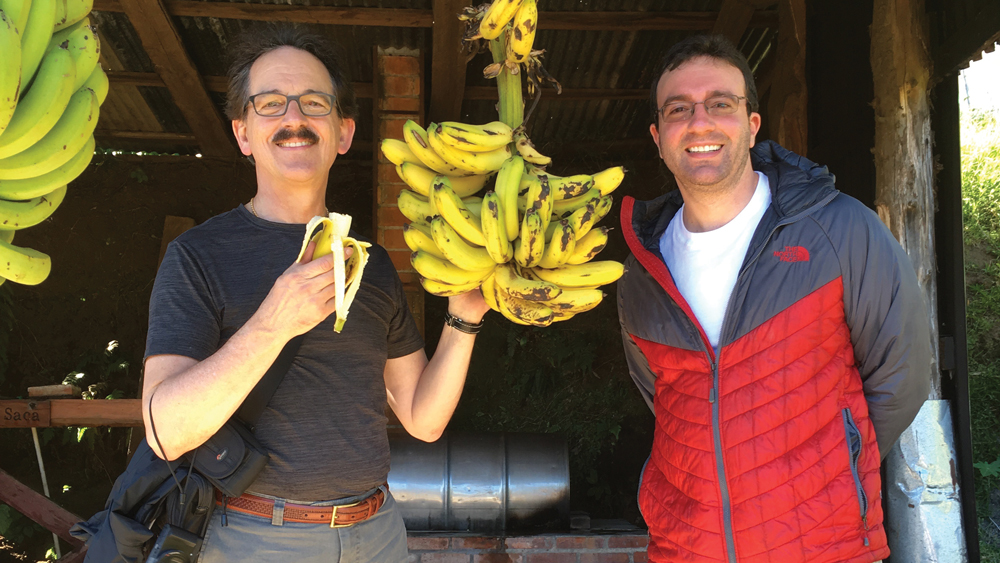
Dr. Hochberg on vacation with his son.
DH: [laughs] They have mirrors in Atlanta, but doing your first surgery in a rearview mirror — backward and upside down — poses some challenges. So when you’re comfortable with the anatomical considerations and your patient selection, you have your first case set. Today, I think people who are getting started in our field have wonderful opportunities because there are mentors and teachers available in programs where you can actually bring your patient to one of these courses and place that implant. Not only that, but in your community, I would suggest to hang on to somebody — get a mentor and join the AAID — and that mentor will come to your office and be very helpful in guiding you. It’s all about confidence and feeling comfortable, whether it’s a crown, a posterior composite restoration, or surgical placement of an implant. There’s something very gratifying about taking the patient through all of the procedures and protocols, and really helping people throughout your career. It goes far beyond just preparing an osteotomy in the bone and screwing an implant into place.
There’s something very gratifying about taking the patient through all of the procedures and protocols, and really helping people throughout your career. It goes far beyond just preparing an osteotomy in bone and screwing an implant into place.
NP: OK. So here’s what I’ve got: Pick a lovely patient.
DH: “Lovely” is important.
NP: Pick the correct site for the implant, with adequate soft and hard tissue.
DH: Yes.
NP: Find a good mentor, and color within the lines — don’t color outside the lines in your first few cases.
DH: Right. And I think those principles are hard and fast, and I think anybody who’s knee-deep in education would share that with you. I always like to be a sponge — you just want to soak up everything from the person who has the experience and the longevity. If you follow those things — Dr. Carl Misch set those protocols very, very strictly — you’ll find that predictability will come when you do it in that fashion.
NP: So, for the big AAID meeting in San Diego in October, what can doctors look forward to when they come there?
DH: They’re going to have a wonderful experience in San Diego. It’s set up and ready to go. We have a wonderful four-day program, as we always do, with live surgeries, hands-on courses, and even a cadaver workshop in place. And our speakers are always world-class. The AAID selects from an international base, so you have many dentists from throughout the U.S. as well as Europe, South America, and Asia. It’s always a well-attended program, and I unbiasedly feel that it’s one of the better programs to be presented.
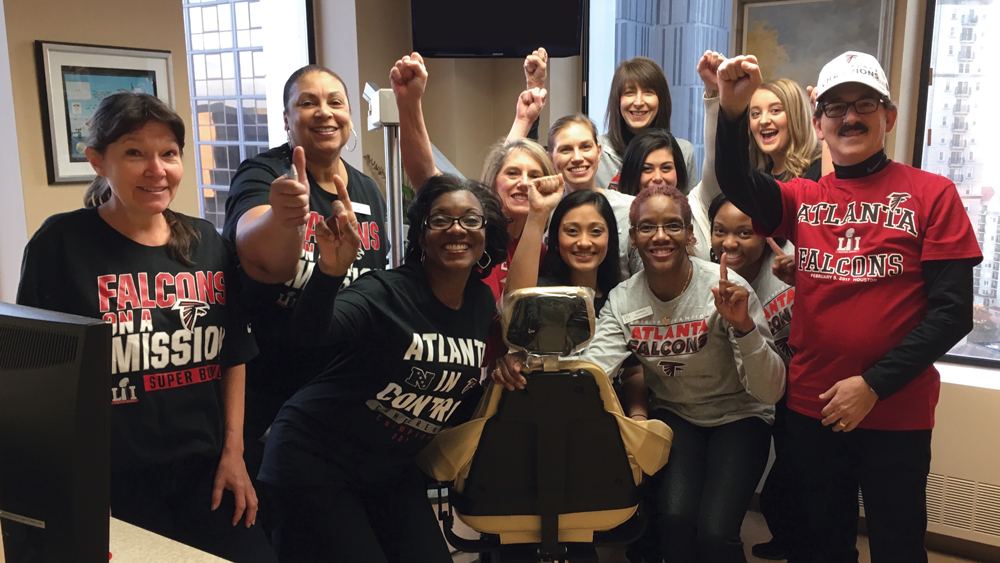
Dr. Hochberg with his team at his practice in Atlanta, Georgia.
NP: I will add that my colleagues from Glidewell Dental — Drs. Jack Hahn and Paresh Patel — are also on the podium at this program.
DH: That’s great. And you folks have been fine supporters of the AAID over the years and have a lot to offer, so we’re glad that you are participating on the main podium.
NP: So, as president-elect, what other plans do you have for the AAID?
DH: Well, as I said, the AAID has been around for some 66 years, and there are already plans that are in motion. I just want to leave the organization in just a little bit better hands than it was given to me for those who follow — and that will include Dr. Natalie Wong, who will be the first international and first female president of our academy, and we look forward to her taking the reins the following year. Right now, we’re in the process of putting forward a wonderful public relations campaign so that patients understand the benefits of having their dental implant procedures provided by a credentialed member of our academy. I think that will add value to the membership and the credential, and it also would be a wonderful opportunity for patients to select AAID dentists for their treatment.
We’re in the process of putting forward a wonderful public relations campaign so that patients understand the benefits of having their dental implant procedures provided by a credentialed member of our academy.
NP: There’s been a lot of talk recently about legal decisions that have been made in certain states and the idea of implant dentistry becoming a specialty of dentistry. Can you summarize that for our readers?
DH: I can certainly summarize it. That has been ongoing for many years, and I think every AAID president before me has had the hopes of specialty status being bestowed during their presidency. So, for 25 years, this has been the case. I certainly believe, and so does the AAID, that there’s a place in oral health care for implant dentistry to be a specialty, and that battle is still going on state-to-state and board-to-board. It will happen. I cannot predict when, but I can tell you that today, we are much further along on that path than we were even five years ago. So keep abreast of that, and we’ll be the first people to advise everybody when that happens.
NP: You’ve had an outstanding restorative practice in Atlanta for many years, and I know that you recently added an intraoral scanner to your practice. Tell me a little bit about how the old dog has been able to adapt to doing new tricks.
DH: I contemplated, “Do I need to do this at this point in my career, or do I not?” And I’ve always added technology appropriately — I was never a big bells-and-whistles guy just to say that I had a laser or the latest device. So when I was looking at intraoral scanners, I decided to go with the TRIOS® (3Shape North America; Warren, N.J.). Sometimes you have reservations with these kinds of purchases, but I didn’t in this case. The whole concept of digital technology in your practice, whether it’s a CBCT scanner or a TRIOS unit, has just been incredible. The idea of going into an operatory without impression material is wonderful. Scan bodies that are utilized to make impressions for prosthetics for dental implants are the rule of thumb now. There’s no more pickup impression copings and having the patient gag in your office. My laboratory is the cleanest room in my office. There’s no stone, there’s no mess, the assistants clean up quicker, there’s no trays to try in, and it’s really accurate.
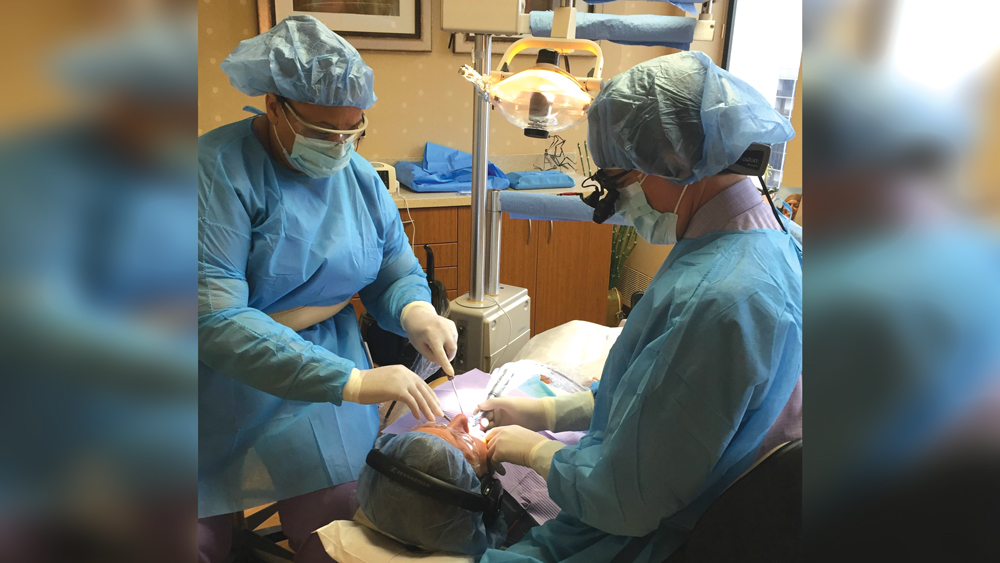
Although implant therapy occupies much of his efforts in dental education, Dr. Hochberg’s practice offers general, restorative, implant and cosmetic dentistry services to patients throughout Atlanta and the state of Georgia.
One of the best things is the ability of dentists to communicate with their lab, like with Glidewell Laboratories. You make your scan, you upload your file to Glidewell Laboratories, and it’s actually in the possession of the laboratory before your patient gets back to the car. The technician at the source looks at the scan virtually on the screen, and if they see that something’s not quite right, instead of sending you back the entire model marked up with a pencil and having you call the patient back in to repack the tooth or implant and make another impression, you actually have an intelligent discussion on exactly which area needs to be scanned. You call your patient, they come back in, and you just rescan that area because it will be stitched together with the initial digital impression. It really is the future, and as you incorporate three-dimensional printers and milling machines, there’s a seamless flow from the CBCT, to the intraoral scan, to the patient. I think this workflow has changed dentistry, and it’s maybe one of the biggest changes I’ve seen in my career.
NP: I think so. And you know, it’s part of this workflow, so as you do the scan, you can make the decision — maybe you want to create the restoration in your office with chairside milling, or maybe you want to send it to a laboratory. You have a choice of materials that you can use, and it really opens things up for a lot of great new restorative options for patients.
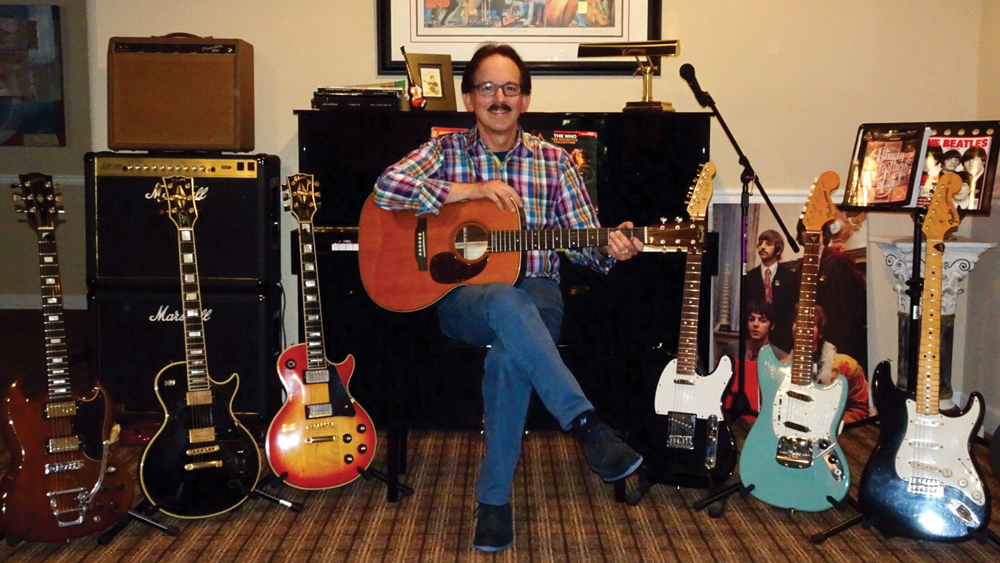
An avid musician, Dr. Hochberg enjoys collecting and playing guitars in his free time.
DH: It does, and it’s an incredible “wow” for the patient because you share your scan with them after you’re done, and when they see a three-dimensional image of their mouth or their teeth, they always ask, “Is that my mouth?”
NP: Has it made your preparations better?
DH: Much better.
NP: David, we really appreciate you being here. I want to close with the big question: What do you see as the future for implant dentistry?
You have millions of patients who are thrilled to be able to get through their day without thinking about their teeth, and enjoying the prosthetic reconstructions that dental implants offer in the most natural way possible. So the future is really wonderful for everybody in my academy and everybody in the profession.
DH: I think the future for implant dentistry is huge. The acceptance of the protocols and procedures is well-established in the profession. More professionals who are health care providers are including implant dentistry in their practice. You have millions of patients who are thrilled to be able to get through their day without thinking about their teeth, and enjoying the prosthetic reconstructions that dental implants offer in the most natural way possible. So the future is really wonderful for everybody in my academy and everybody in the profession. Also, the AAID offers continuing education in their many meetings throughout the year. As a matter of fact, we’re going to be coming back to Newport Beach, California, in April for a special follow-up to a program from about 10 years ago called “Focus on the Sinus,” and it will feature clinicians explaining and teaching those protocols on sinus grafting. I believe the originator of the procedure, Dr. Hilt Tatum, will be at the program as well, and if you’ve never seen him present or speak, that’s something not to miss. The involvement of Glidewell Dental in these programs is much appreciated. It seems that Glidewell Dental understands what to support and how to support it, and the AAID is very pleased with that. And on a closing note, I’m certainly proud and humbled to be assuming this position for the AAID. It’s been my implant home for 30-some-odd years, and without my academy, I probably wouldn’t be sitting here today, so I encourage all practitioners to become involved in this field. I think you’ll find it beneficial, and I know your patients will as well.
NP: Well, I wish you a great year of your presidency, and I appreciate you joining us today.
DH: Thank you for having me.



